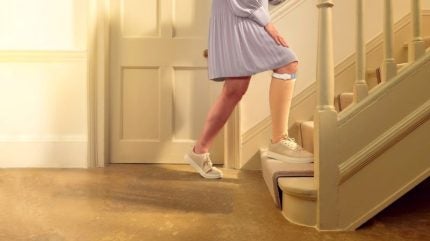
A new study by UK-based Sky Medical Technology has found that its wearable for hard-to-treat venous leg ulcers (VLU) increased cost savings and healing probability versus the standard of care (SoC) alone.
The study, published in the International Wound Journal (IWJ), found that use of the company’s geko device resulted in an average cost saving of £774.14 per patient across the UK’s National Health Service (NHS).
The device received clearance from the US Food and Drug Administration (FDA) in 2021 for increasing microcirculatory blood flow in lower limb ischaemia.
Further economic analysis found that the adoption of the geko device may reduce the overall average expenditure for the NHS on VLU wound management by 15% per patient.
The device, a neuromuscular electro-stimulator (NMES) that stimulates the common peroneal nerve to increase venous, arterial, and microvascular blood flow, was also found to increase wound healing probability by 68% compared to SoC alone.
“The NHS spends an estimated £3.1bn annually treating VLUs, with approximately 87% of these costs (£2.8bn) used to treat hard-to-heal VLUs,” said Sky Medical CEO Bernard Ross.

US Tariffs are shifting - will you react or anticipate?
Don’t let policy changes catch you off guard. Stay proactive with real-time data and expert analysis.
By GlobalData“Publication of the geko device VLU cost-effectiveness data underscores our company’s dedication to evidence-based solutions that can address critical healthcare challenges and reduce healthcare system costs. The evidence indicates that adding geko to the care of chronic wounds offers the NHS a direct and immediate potential cost saving of £420m annually.”
Sky Medical’s study randomised patients with hard-to-heal VLUs who acted as their control, with the trial’s primary efficacy endpoint comparison of the rate of Wound Margin Advance (WMA) between patients who wore the geko device for 12 hours per day alongside SoC (compression) over a four-week treatment period and those who only received SoC.
Patients who wore the geko device and received SoC achieved a statistically significant two-fold acceleration in the rate of VLU healing on the WMA scale compared to patients who underwent four weeks of compression alone.
The cost-saving potential of using geko alongside SoC was derived from UK reference costs, the British National Formulary, and the Personal Social Services Research Unit, with the primary outcome measure being the incremental cost per quality-adjusted life-year gained.
Sky Medical, the parent company of FirstKind, published a study last year that showed a statistically significant increase in the rate of healing of VLUs treated with an advanced neuromuscular electrostimulation device combined with multi-layer compression.
According to research, the global VLU treatment market is forecast to reach a valuation of $7.21bn by 2032.



